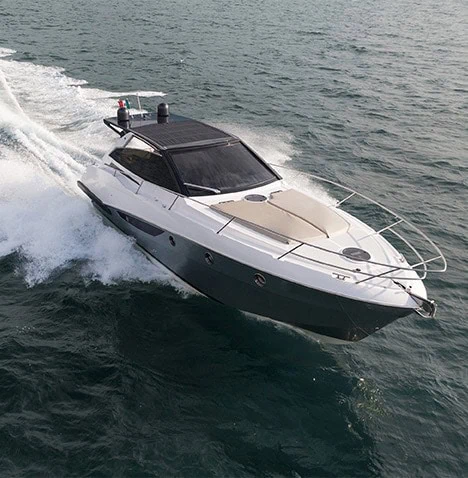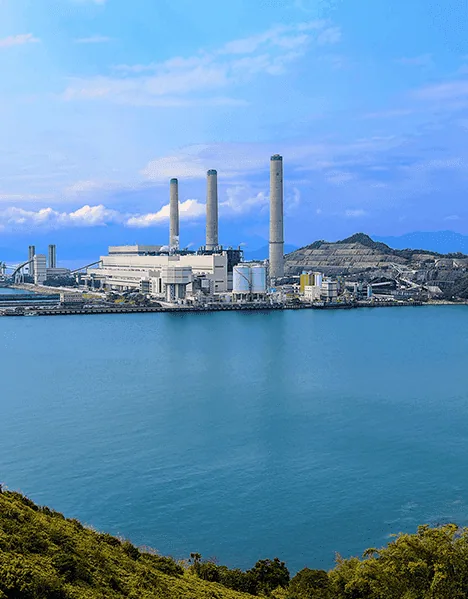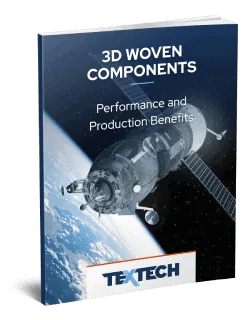Learn more about our 3D Woven Component experience
Tex Tech Industries is a leading provider of 3D woven components which are intended for use in an ever-growing range of applications. Our in-house developers have had the opportunity to work closely with clients to identify problems, prototype and test 3D components, and create solutions for full production. To learn more about how we've worked with partners in the past, view our case studies below. You can also download our guide 3D Woven Components: Performance and Production Benefits.
Case Study 1

3D Woven Boat Hull Construction
This marine company builds a large number of recreational boats in the 20 – 35-foot range. Seeking to improve their core technologies and at the same time reduce costs and increase throughput, they evaluated moving from open mold to resin infusion, as well as implementing the use of E-glass 3D fabrics in hull construction. The new reinforcement replaced a combination of plain woven roving and chopped glass. In each case, the resin was applied by spray-up and hand wet-out technique. Careful monitoring of fiber, resin and man-hours used in the manufacture of each different hull model led to the conclusion that these 3D fabrics contributed to a reduced overall cost per hull. For example, the cost of the “baseline” hull made with 2D materials was $470. The hull based on the 3D woven fabrics cost only $435.
The company worked through several stages of hull manufacture, including spray-up of resin/chopped glass and lay-up of single 77 oz/yd2 E-glass 3D fabric layer in the hull bottom and 30 oz/yd2 layer in the hull side. Lay-up time was reduced from 90 to 50 minutes in this example. In addition, the use of 3D woven fabric preforms in this hull saved 40 lbs. of resin.
Case Study 2
3D Woven Pressure Tanks
This company is a large fabricator of industrial pressure tanks made from textile composites. Pressure tanks made of composites have a great advantage over tanks make of steel, both in being much lighter and in having higher resistance to corrosion. In making the decision to move from open to closed molding, the company determined a need for a more “infusion-friendly” reinforcement. After evaluation and prototyping with 3D fabrics, the decision was made to use 96 oz/yd2 3D woven fabric replacing 2D woven materials. A typical component contains multiple layers of 3D fabric, but far fewer layers than the 2D material. Labor was reduced by 50% and cycle time was reduced from twelve to four hours by using the combination of resin infusion and 3D fabric reinforcement. This has opened up new product opportunities making the company a stronger competitor. The work environment is getting cleaner, workers are happier and worker retention is improving. According to key managers, the plant has a new “productivity spirit”.
Case Study 3

3D Woven Structural Components- Ship Building
This company is a builder of high performance powerboats. Their primary goals were weight savings (very important for increased speed) and increased throughput, although they were not willing to pay a premium for these benefits. Again, the combination of 3D fabric reinforcements and resin infusion allowed them to meet their goals, with the added benefit of lowering costs. On a cost per square foot basis, raw materials (3D woven fabric preforms and core) cost $1.00/ft2 more than the incumbent materials, but labor savings of $8.00/ ft2 far outweigh the added material cost. Productivity immediately increased by 50% and ultimately increased by 100%. Boat weights dropped 20%, while strength and stiffness increased at least 50% with new, cored hulls. The work environment is improved, worker attitude is better and emissions have been reduced by 80%. This has been a very successful implementation of resin infusion with 3D fabrics as the cornerstone.
Case Study 4
3D Woven Components to Replace Corrugated Steel Structures
This company has designed a textile composite alternative to a corrugated steel structure for the industrial/infrastructure market. Although the composite is much lighter in weight than its steel counterpart, the key to market acceptance was to produce the composite component at a cost that would allow competitive pricing. After careful analysis, the company determined that vacuum infusion with low cost tooling was the only fabrication approach that would meet the manufacturing cost goals. They set out to find a reinforcement that 1) was “infusion-friendly”; 2) could conform easily to the corrugated mold shape; 3) could be built up quickly to the required thickness of 8 mm 4) had sufficient mechanical properties to withstand rigorous performance requirements. After numerous attempts with a variety of 2D reinforcements, they discovered 3D fabrics. This was indeed a signature application for 3D fabrics, as the selected 96 oz/yd2 3D woven fabric was the only material the company tested that met all the criteria.
Case Study 5

3D Woven Components for Coal Scrubbers
In order to remove vast quantities of sulfur dioxide (SO2) from the exhaust of coal-fired power plants, plant managers use massive decking for coal gas bubble jet reactors wet scrubbers. These systems mix the present flue gasses with water and limestone inside a large circular jet bubble reactor. Inside the reactor, a combination of sandstorm and acid-laced tsunami creates a corrosive environment. In order to keep this storm separated and under control, decking divides the vessels into three main sections, each of which has a different chemistry, temperature, and pressure. These decks are manufactured to bear constant abrasion, chemical corrosion, thermal stress, and the buildup of sediment. Fiberglass-reinforced polymer (FRP) is employed as it is naturally resistant to corrosion. The scale of the challenge required the construction of FRP floors over 1 inch thick and stiffened by ribs several inches thick. To address this challenge, RPS Composites, Inc. used vacuum infusion to create massive composite panels manufactured with Advantex® glass fiber reinforcement supplied by Owens Corning. Advantex® offered advantageous mechanical properties when compared to standard E-glass and E-CR glasses. The Advantex® glass product is a patented boron-free glass formulation that is a corrosion-resistant E-CR glass fiber reinforcement meeting ASTM Standard D 578 and demonstrating proven performance in the field for more than 15 years.
Download the 3D Woven Components eBook
In our eBook, 3D Woven Components: Performance and Production Benefits, we break down the advantages of 3D weaving.
Download Now